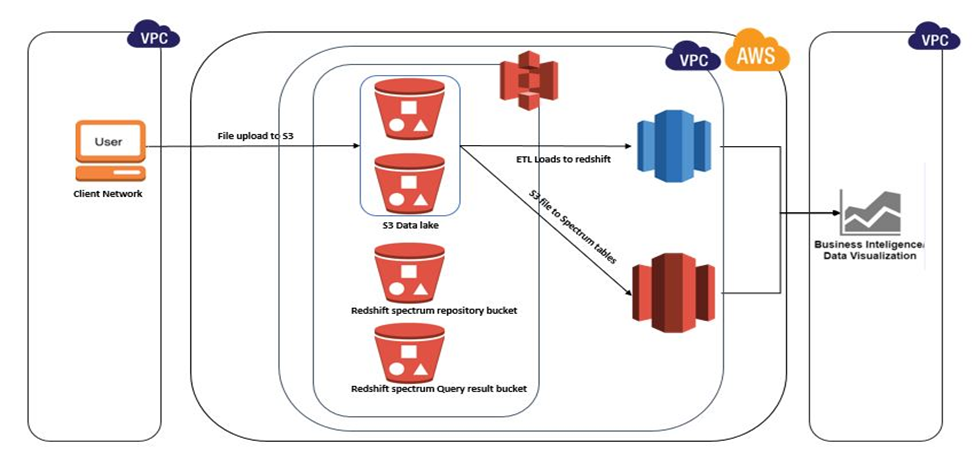

Athena and Spectrum both use serverless engines to query Amazon S3 data, but Athena is an interactive service, whereas Spectrum is part of the Redshift stack. Choosing between Redshift Spectrum and AthenaĪmazon Athena and Redshift Spectrum are similar-yet-distinct services, as we’ve seen.

By querying operational databases, the service allows you to perform transformations and then load data directly into Redshift tables. Redshift can also be ingested using Federated Query. With Redshift Federated Query, you can run a query on historical data stored in Redshift or S3, and live data stored in Amazon RDS or Aurora.
#Aws redshift spectrum full#
The full list of Redshift connectors can be found here. With Athena, you are able to load data from external sources other than S3 directly into the database, so you do not have to copy it to S3 beforehand. However, if you’re joining two tables with a high correlation then the ETL layer of your process will execute that join automatically. They store their data on Amazon S3, have no need for an index, and cannot perform joins. Redshift Spectrum and Athena are both serverless applications. There is only one major difference between Athena and Spectrum: Athena stores query results on S3, which can be loaded into Redshift from there while Spectrum can join tables directly on Redshift. FunctionalityĮssentially, both Athena and Redshift Spectrum do the same thing: query S3 using standard SQL, and store the results. For each Glue Data Catalog schema, external tables must be configured when using Redshift Spectrum. In Athena, table metadata is stored directly in the Glue Data Catalog. These tables are managed using Glue Data Catalog. When querying data stored on Amazon S3, Spectrum and Athena both use virtual tables. Athena, on the other hand, uses the resources allocated automatically by AWS, which might differ during peak usage periods. In cases where you need a query to return extra-fast, you can allocate additional compute resources (unfortunately, this can get costly over time). Redshift Spectrum, therefore, gives you greater control over performance. Performanceīoth Spectrum and Athena are serverless but differ in that Athena uses pooled resources from Amazon Web Services (AWS) for queries, whereas Spectrum allocates resources depending upon the number of nodes within an RDS instance. While these costs are all-inclusive in Athena, they are also all-inclusive for Spectrum – as we will cover later, you will have to allocate these costs based on your cluster of Redshift servers. Since these services are decoupled so that storage and computation are separated, you can make use of inexpensive S3 to handle petabyte or exabyte-scale data without racking up massive cloud fees. S3 storage would be another cost to consider since it is relatively inexpensive compared to databases.
#Aws redshift spectrum trial#
If your 10 MB free trial expires without any charges applied to your account, Athena will charge you based on how much data was scanned. AWS rounds up to the nearest megabyte, so you’ll always pay at least $5 per query. When running a query in Spectrum, the amount of data scanned is billed according to how much data is scanned.

We’ll take a close look at Athena and Spectrum here, with the aim of helping you understand when to use them for different types of analytics tasks.Ĭonsidering their various use cases, Athena and Redshift Spectrum make excellent choices.


 0 kommentar(er)
0 kommentar(er)
